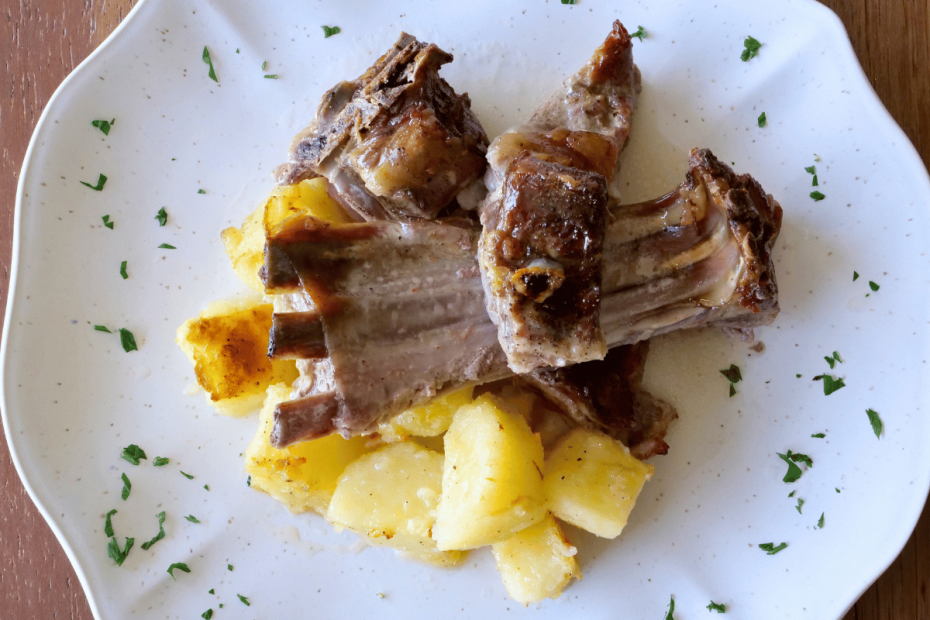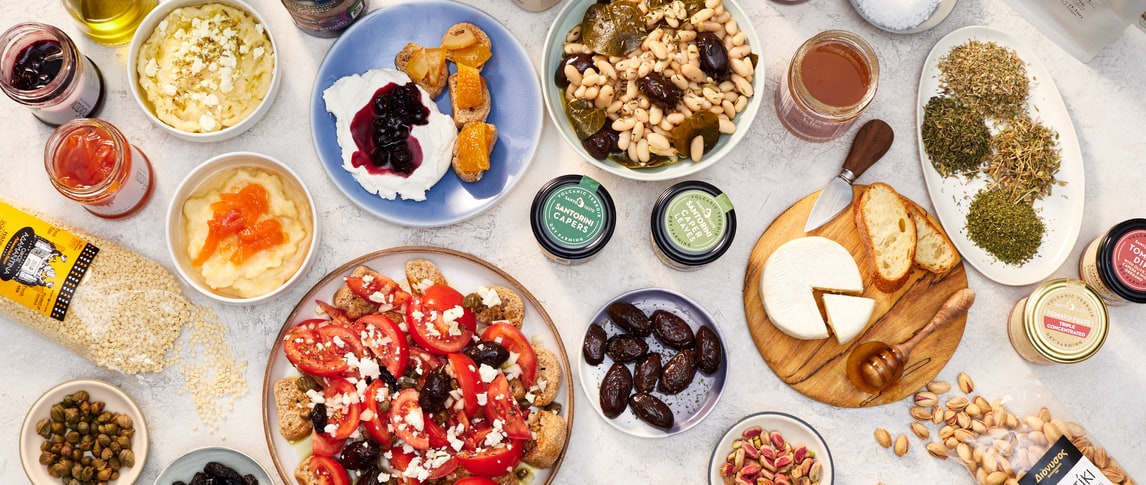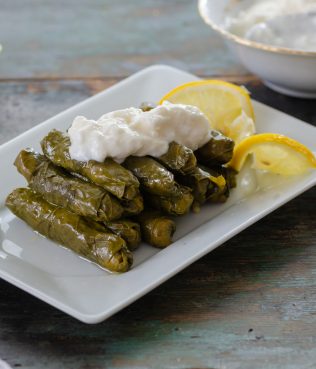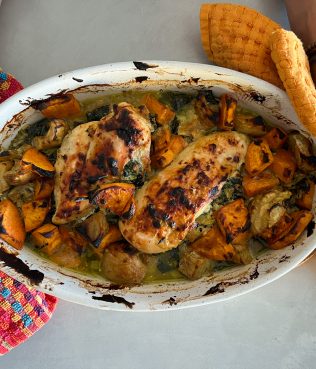
Feminist Lamb and Potatoes
There are recipes that tell a story, and then there are stories that cook themselves into history. Feminist Lamb and Potatoes does both.
This slow-cooked dish first appeared in 1887 in The Ladies’ Journal (Efimeris ton Kyrion)—Greece’s first feminist newspaper—founded by Kalliroi Parren, a visionary champion of women’s rights and education. In this recipe, tender lamb simmers slowly in butter until it melts from the bone, while the potatoes, cooked separately, are described as turning “as golden as apricots and soft as figs.”
I’ve adapted it gently for modern kitchens, but its soul remains the same—simple, honest, and deeply Athenian. You’ll find this and other stories of culinary history in my new book, Athens: Food. Stories. Love., a celebration of Greek food and the spirit of the table.
Ingredients
- 3 generous tablespoons plus ½ cup salted butter
- 1 bone-in leg of lamb cut into serving-size pieces
- Sea salt and black pepper to taste
- 3 large ripe tomatoes cored and cut into chunks
- 2 pounds new potatoes peeled
Instructions
-
Preheat the oven to 325°F (160°C). Season the lamb generously with salt and pepper.
-
Place the lamb pieces inside a Dutch oven or, ideally, a copper pot with a lid. Add three tablespoons of butter around the lamb. Scatter the tomatoes and a little pepper over the top.
-
Add just enough water to come a little less than halfway up the lamb. Cover and bake very slowly for about 3 hours, or until the meat is tender and the juices have thickened.
-
Increase the oven temperature to 375°F (190°C). Remove the lid and roast uncovered for about 20 more minutes, checking occasionally to prevent drying, until the lamb browns slightly.
-
About halfway through roasting, start the potatoes: melt the remaining butter in a wide pot or deep skillet over low heat. Add the potatoes, season with salt and pepper, cover, and cook gently for about 35–40 minutes, until they’re golden “like apricots” and soft “as figs.”
-
Serve the lamb and potatoes together, spooning the buttery pan juices over the top.
Notes
This dish honors Kalliroi Parren and the pioneering women of Athens who used food as both sustenance and statement. Use the best butter you can find—it’s the backbone of the dish’s flavor and texture.
For a lighter variation, clarify the butter before cooking, or use half butter and half olive oil. The slow bake develops deep sweetness in the tomatoes and a rich, nutty finish in the sauce.
Serving Tip: Serve with a crisp salad of bitter greens or a simple tzatziki for balance.
If You Like This Recipe, You’ll LOVE…










